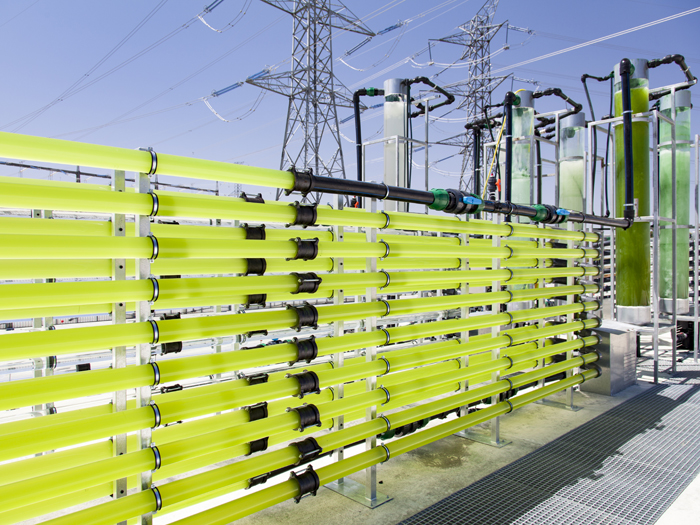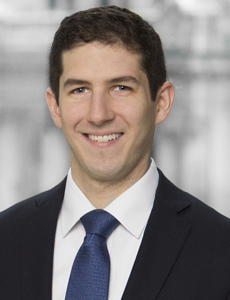Carbon Sequestration: What Is It and How Can It Help Industrial Operators Reduce Their Carbon Footprints?

International authorities and climate scientists agree: To prevent the worst effects of global climate change, society as a whole needs to limit warming to less than 2 degrees Celsius and achieve net-zero carbon emissions by 2050.
Drastic steps need to be taken to achieve these goals. But some industries may not be able to adapt quite so quickly. Industrial facilities may not be able to completely eliminate their carbon emissions entirely by 2050.
That’s where carbon sequestration comes in. Carbon sequestration involves capturing and securing atmospheric carbon dioxide from power plants and industrial sources and storing it in the earth. It could play a pivotal role in helping these industries drastically reduce their emissions while they transition to 100 percent clean energy.
“Where carbon sequestration comes into play is really as part of that story of transition. It’s not necessarily an end point, but it’s a way of getting to where we have to go,” said Max Horn, environmental product line manager (SPILLS), Liberty Mutual
“It’s not that carbon sequestration prolongs fossil fuels. It’s that the process enables that transition by creating a way today for these companies to get to a carbon-neutral situation through carbon sequestration while at the same time moving toward greener sources of energy.”
What Is Carbon Sequestration?
The idea of capturing carbon from the flue gas of industrial facilities has been around since 1938, when the first carbon-capture system was proposed, according to the Columbia Climate School. Over three decades later, the first large-scale efforts to inject liquified carbon into the earth occurred in 1972 at Texas’ Sharon Ridge Oil Field.
In the intervening years, the technology was primarily used during enhanced oil recovery. Carbon emissions from industrial facilities were captured, then pressurized and injected into oil and gas fields to squeeze out more of the fuel sources.
“It’s an old technology, but it’s also a new technology in essence. Permanent sequestration is a newer concept,” Horn said.
With permanent sequestration systems, industrial facilities take the captured carbon and, instead of emitting it through gas flues, they inject the liquefied CO₂ into porous rocks to be stored in the earth in perpetuity.
Sequestration needs to last at least 1,000 years to be considered permanent. But since carbon fortifies as time goes by, it will likely last indefinitely. The U.S. has the capacity to store about 3,000 metric gigatons of carbon dioxide using this method, per the U.S. Geological Survey.
Horn said that industries like ethanol and concrete production, which don’t have an immediate path to decarbonization, can vastly reduce their emissions by employing carbon sequestration, and at low costs. Geological sequestration costs between $0 and $100 per ton.
“There are a number of industries that cannot immediately decarbonize because of the processes that they require,” Horn said.
“You’re taking industries that cannot immediately switch over to an alternative source of energy, such as wind or solar, and you’re allowing them to continue to operate in the short term in a way that is not producing the massive amounts of carbon dioxide that they’re currently emitting.”
Benefits of Carbon Sequestration
Beyond reducing a business’s overall emissions, carbon sequestration comes with numerous benefits for industrial facilities.
Businesses that practice carbon capture and sequestration are eligible for the 45Q tax credit, which increased in value from $50 per ton of captured CO₂ to $85 as a result of the Inflation Reduction Act, Forbes reported. The IRS released guidance last year about who can participate in the program and clarified what could cause a participant to lose the credit. Horn believes this will increase participation in carbon sequestration programs.
“You’ve increased the value of the credit, and you’ve also increased the opportunity and clarified the opportunity. And so, right now is the point where there was a tremendous land grab for carbon sequestration sites,” Horn said.
“A lot more businesses see that this is a real opportunity and something that people could put extensive and very expensive investment into.”
Increased corporate focus on environmental, social and governance factors is another boon for carbon sequestration projects. Firms with industrial facilities are looking to assure the public that they’re invested in the fight against climate change, and these projects can help them meaningfully reduce their emissions.
It can also be a driver of new business. State and federal contracts may favor low-carbon industrial producers. If they’re awarding a contract, a firm with carbon sequestration efforts in place could win out over a firm lacking those tools.
“If you’re creating concrete and you want to sell into a state like California that has favorable contract processes for low-emission industries or low-emission businesses, that creates an opportunity for your market,” Horn offered as an example.
Site Selection Tax Liability and Other Potential Exposures
Carbon sequestration may have environmental and financial benefits, but there are still risks companies need to consider before taking on a project.
Diverting CO₂ emissions into the earth requires years of investment. Plants need to be retrofitted to capture carbon and liquify it. Then, pipelines need to be built to transport the carbon to the sequestration site, since most facilities won’t be sitting atop porous ground where they can pump their emissions directly into the earth.
If this process isn’t completed correctly, or if a company accidentally causes seismic activity during the process of injecting carbon into the earth, they could disrupt previously stored carbon, releasing it back into the environment. They could also lose their tax credits.
Site selection is key to reducing these risks. Insureds considering carbon sequestration projects for their companies should choose sites with porous rocks like sandstone and limestone. Sites that have previously been oil fields have different risks than those that have not been, Horn said, since hydrocarbons could still be in the rocks.
“In areas like in old oil fields, there could be remaining hydrocarbons or other material like desalinated water, things that are not meant to come up from underground. As you pump carbon in, you could pressurize and force those to the surface,” he explained.
The Role of Insurance
Insurance can help reduce some of these concerns in three important ways.
First, carriers can help companies and their brokers understand the risk management implications of carbon sequestration. Second, they can provide risk engineering services highlighting the impact of the transition on their current operations.
Finally, insurers can provide financial protection as companies undertake these projects. Contractors’ environmental liability policies can insure the process of retrofitting the plants. Site pollution liability and environmental protection coverages can protect companies in case CO₂ or other pollutants are released during the sequestration process.
“Underground sequestration is not new,” Horn said. “The pollution market is very capable of handling this exposure, from risk engineering to strategic risk management.”
Financial products can also protect the cost of losing a tax credit: “You have a financial loss — not just a cleanup cost — because the cleanup being direct carbon recapture of that carbon dioxide is unlikely. So it’s a financial loss, and that’s something that we can cover,” Horn said.
“The release of carbon dioxide that has been sequestered is essentially a pollution incident. And so, we have a modified trigger to also cover that clawback of credits.” &












